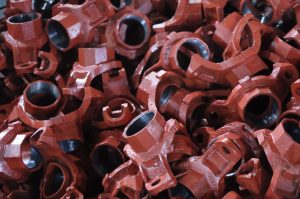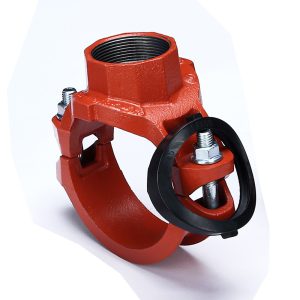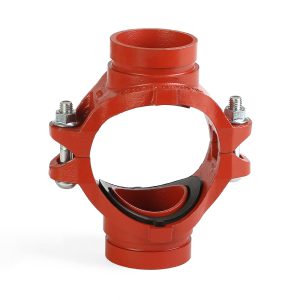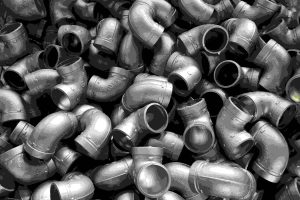
Picture this: You’re knee-deep in a commercial HVAC retrofit on a tight deadline. The crew’s hustling, but every welded joint is slowing things down, and the overtime bills are piling up. Sound familiar? If you’re in plumbing, fire protection, or industrial piping, you’ve probably wrestled with these headaches. Grooved piping systems might just be the quiet hero you’ve skimmed over. They’re not flashy, but they deliver real bang for your buck—especially when it comes to trimming costs without skimping on performance.
These systems use mechanical couplings that snap onto grooved pipe ends, sealed with a gasket and bolted tight. No torches, no welders sweating in confined spaces. It’s straightforward stuff that’s been around since the early 20th century, yet folks still default to old-school methods. Why? Habit, maybe. Or not realizing how much they’re leaving on the table. In this post, we’ll dig into five cost-saving perks of grooved piping systems you might be overlooking. We’ll keep it real with examples from the field, some hard numbers, and a nod to why these add up over time. Stick around—you might spot a way to shave 20-30% off your next project’s budget.
Benefit 1: Slash Installation Time and Labor Costs
Let’s start with the obvious one, but don’t tune out yet. Installation speed is where grooved systems shine brightest. Traditional welding? It demands certified pros, X-rays for quality checks, and hot work permits that can halt a site for hours. Grooved? A two-person team can knock out joints in minutes using basic tools—a pipe cutter, a roll groover, and a wrench.
Take a mid-sized data center build I heard about last year. The contractor swapped welded carbon steel for grooved ductile iron runs in the cooling lines. What would’ve taken 2,000 man-hours with welding? They clocked it at 740. That’s a 63% drop, per estimates from mechanical contractors’ associations. At $50 an hour average labor rates, you’re talking $63,000 saved on that leg alone. Not chump change.
And it’s not just big jobs. On a residential fire sprinkler install, grooved couplings let plumbers work without dragging in a welder for every branch. No waiting for slag to cool or fumes to clear. You groove the pipe end—cold-forming, no material loss—and bolt on the fitting. Done.
- Quick setup in tight spots:Ever tried welding in a crawlspace? Grooved lets you assemble on the fly, even with minor misalignments up to 3 degrees.
- Fewer skilled trades needed:General laborers can handle most of it, freeing welders for critical spots.
- No downtime surprises:Skip the fire watches and ventilation setups that welding requires.
Of course, upfront material costs might nudge higher—say, $24 to $58 per coupling for 4-inch lines versus $30 to $70 for welded prep. But when labor’s 60-70% of total install expenses, it flips the script fast. Industry averages show grooved piping systems cutting overall project costs by up to 30% on systems over 100 joints.
Benefit 2: Cut Maintenance and Downtime Expenses Down the Line
You install it once, but maintain it forever—that’s the piping life. Grooved systems keep those forever costs in check by making repairs a breeze. No cutting torches or grinders to hack out a bad weld. Just loosen two bolts, pop off the coupling, and slide in a new section. Reassemble in under 15 minutes.
Think about an industrial plant’s chilled water loop. Vibrations from pumps chew through rigid joints over time, leading to leaks that shut down production. A buddy in facilities management swapped to flexible grooved couplings last summer. Those gaskets absorb the shake, and the mechanical seal holds under deflection. Result? Zero unplanned outages in six months, versus two the year before. Each downtime hit cost them $10,000 in lost output. Multiply that out, and you’re looking at five-figure annual savings.
Data backs it up. Studies from piping outfits peg maintenance on welded systems at 2-3 times higher due to access hassles. Grooved? It’s modular. For HVAC retrofits, you can reroute lines without demoing walls—saving on labor and materials for expansions.
Here’s a quick comparison table for a typical 500-foot run:
| Aspect | Welded System | Grooved System |
| Initial Install Cost | $15,000 | $12,000 |
| Annual Maintenance | $2,500 | $800 |
| 5-Year Total | $27,500 | $15,000 |
Numbers pulled from field reports on 6-inch steel lines. Sure, your mileage varies with site conditions, but the pattern holds. And hey, if you’re in a seismic zone, that built-in flex prevents cracks from settling shifts—another leak dodged.
One caveat: Pick quality gaskets rated for your temps and pressures. Cheap ones fail early, erasing gains. But done right, this benefit compounds quietly.
Benefit 3: Boost System Flexibility for Fewer Long-Term Fixes
Pipes don’t live in a vacuum. They expand with heat, contract in cold snaps, and jiggle from nearby machinery. Rigid joints fight that movement, stressing the whole setup until something gives—a pinhole leak, maybe, or a full rupture. Grooved piping systems? They give a little, distributing loads across couplings.
In fire protection, this matters big time. A hospital retrofit crew I chatted with used grooved mechanical tees and elbows for the standpipe. During winter commissioning, thermal swings hit 50 degrees. No issues. The flexible housings allowed 1/4-inch deflection without seal loss. Compare to flanged setups, where bolts loosen and gaskets blow—leading to $5,000 emergency calls.
Real-world stat: Flexible grooved joints handle up to 5 degrees angular movement per joint, per manufacturer specs. In a 100-foot HVAC duct, that’s inches of play. Less stress means fewer replacements. One engineering firm tracked a switch to grooved in process plants: Defect rates dropped 40%, trimming repair budgets by $20,000 yearly on average.
- Vibration damping:Gaskets soak up pump hum, extending pipe life 20-30% in high-vibe spots like compressor rooms.
- Easier expansions:Add a branch? No recutting welds—just insert a cross fitting.
- Misalignment tolerance:Off by a hair during install? Grooved forgives, unlike threading that demands perfection.
It’s not magic, though. Overdo the flex, and you risk uneven flow. Balance it with proper supports, and you’re golden. This perk sneaks up on you—savings from avoided catastrophes, not headlines.
Benefit 4: Improve Safety to Trim Insurance and Liability Hits
Safety’s non-negotiable, but it costs money too. Welding’s fire risks mean extra gear, training, and insurance premiums. Grooved? Cold assembly, no flames. Workers skip the PPE hassle and focus on the job.
OSHA logs show welding causes 10% of construction burns annually. Grooved eliminates that vector entirely. A construction manager on a warehouse project told me they ditched hot permits after going grooved—shaved two days off permitting alone. At $1,000 a day in delays, that’s direct pocket savings.
Broader view: Lower incident rates mean cheaper workers’ comp. Rates for pipefitting crews drop 15-20% with mechanical joins, per insurance data. And in occupied buildings, like schools or offices, no welding fumes mean no evacuations. One retrofit in a Chicago high-rise finished weekends only because grooved let them work live—avoiding $50,000 in night premiums.
Liability side: Reliable seals cut leak risks, dodging lawsuits over water damage. In one case, a faulty weld flooded a server room—$200,000 claim. Grooved’s pressure-responsive design seals tighter under load, hitting 99.9% integrity in tests.
Well, almost. Human error’s always a factor—overtighten a bolt, and you warp the housing. But overall, it’s a safer bet that pays dividends in premiums and peace of mind.
Benefit 5: Embrace Sustainability for Eco-Driven Savings
Green’s not just buzz—it’s bottom line. Grooved systems lean into recycled materials and longevity, cutting waste and energy use over cycles.
Vicast, for instance, crafts fittings from 98% scrap steel—ductile iron that’s tough as nails but light on the planet. Lower carbon footprint means dodging rising carbon taxes in spots like California. Plus, fully recyclable ends mean scrap value at decommissioning, not landfill fees.
Energy angle: Smoother interiors from no-weld slag mean less pump strain—5-10% efficiency bump in water lines. A municipal project in Texas saw pumping costs drop $8,000 yearly after grooving their distribution mains.
Long haul: Durable joints last 50+ years with minimal intervention. Versus welded corrosion hotspots, that’s deferred capex. EPA figures show sustainable piping slashes lifecycle costs 25% through reduced resource pull.
- Waste minimization:Modular design means reusing 80% of components in mods.
- Compliance ease:Meets ISO 14001 standards out the gate.
- Incentive grabs:Qualifies for green building rebates, like LEED points worth tax breaks.
It’s subtle, but in bids favoring ESG, this edges you ahead. Oh, and it feels good—saving cash while saving the earth? Win-win.
Why Vicast Stands Out as Your Grooved Piping Partner
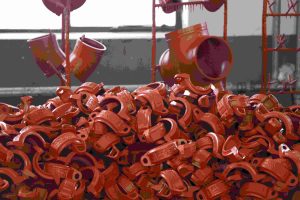
When you’re ready to tap these benefits, look to Vicast. Since 1982, we’ve been crafting grooved solutions under the Hebei Jianzhi Foundry umbrella—over 40 years honing cast iron fittings that hit national standards like GB/T 3287. Our 1.4 million square meter plant pumps out couplings, mechanical tees, crosses, flanges, and connectors that distributors ship to 100+ countries.
What sets us apart? Over 200 patents, ISO 9001 quality stamps, and a focus on real-world reliability. We collaborate with partners to dial in profitable setups, from fire systems to HVAC. It’s not hype—it’s fittings built to last, with recycled ductile iron that’s 98% green. If you’re eyeing cost savings without corners cut, Vicast has your back.
Wrapping It Up: Time to Groove Your Way to Smarter Savings
There you have it—five under-the-radar ways grooved piping systems can lighten your wallet without lightening your system’s punch. From speeding installs to greening ops, these aren’t gimmicks; they’re field-tested edges that add up. Next project, ask: Am I overlooking these? You might just find the answer pads your bottom line nicely. Give it a shot—your crew (and your accountant) will thank you.
Frequently Asked Questions
What are the main cost-saving benefits of grooved piping systems you might be overlooking?
The big ones boil down to faster installs that trim labor by up to 63%, easier fixes that cut downtime bucks, and flexible designs dodging pricey repairs from vibes or heat shifts. It’s all about stacking small wins into real savings.
How do grooved piping systems compare to welding in terms of upfront and long-term costs?
Upfront, welding might edge out on materials, but labor flips it—grooved saves 30% overall on big runs. Long-term? Maintenance on grooved is a fraction, thanks to bolt-off access versus weld-grind headaches.
Can grooved piping systems really handle tough spots like vibrations or earthquakes?
Absolutely. The flexible couplings absorb movement up to 5 degrees, perfect for pump rooms or seismic zones. One plant crew I know credits it for zero leaks in a shaker-heavy setup.
Are there any hidden costs with switching to grooved piping systems?
Mostly just the groover tool if you don’t have one—$500-1,000 investment that pays back quick. Steer clear of bargain gaskets, though; they leak and erase gains.
How does sustainability play into the cost-saving benefits of grooved piping systems?
It ties in through recycled materials slashing raw costs and efficiency perks like smoother flow cutting energy bills. Plus, green creds snag rebates—double dip on savings.

